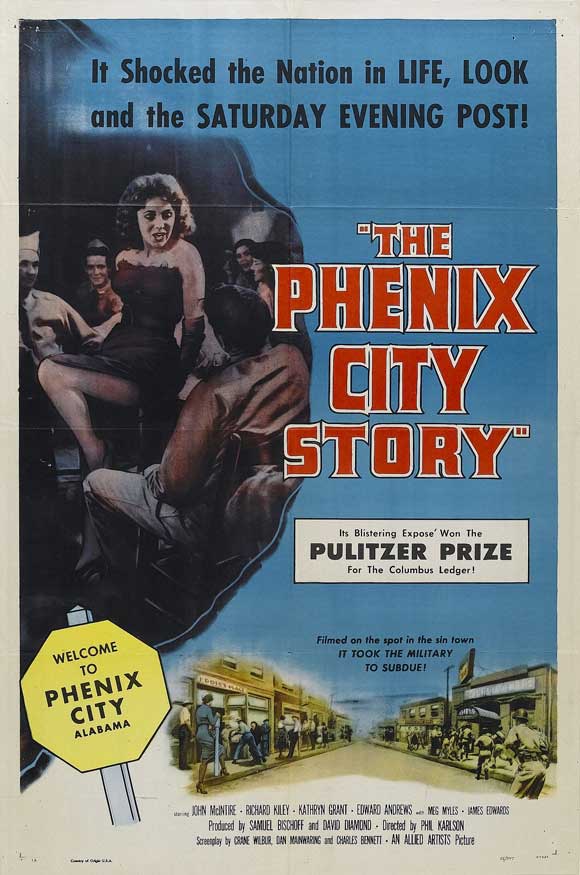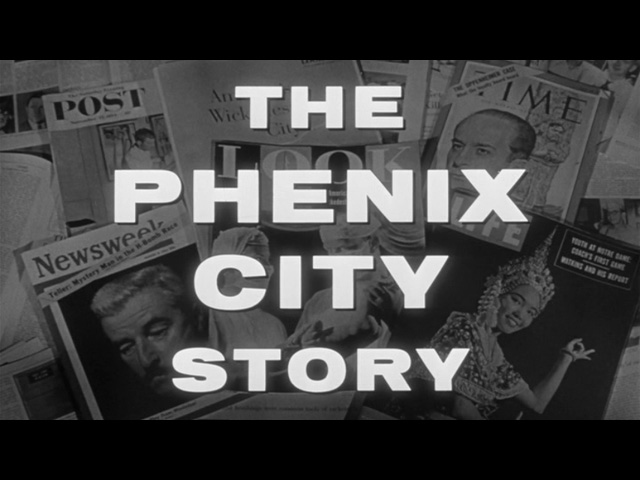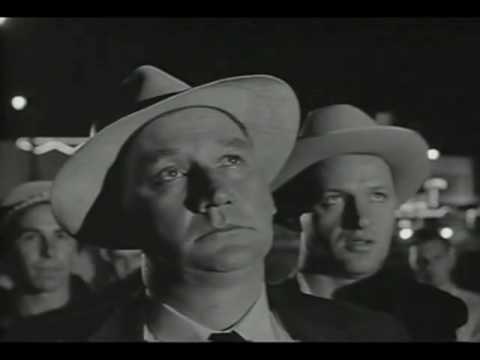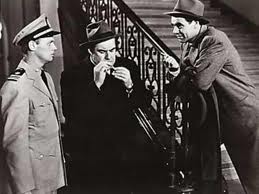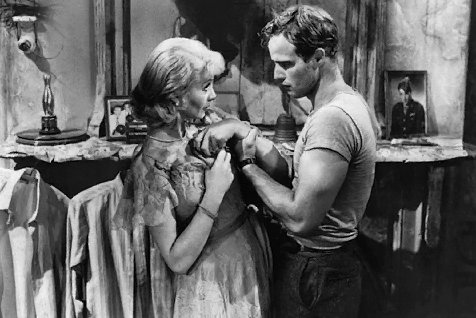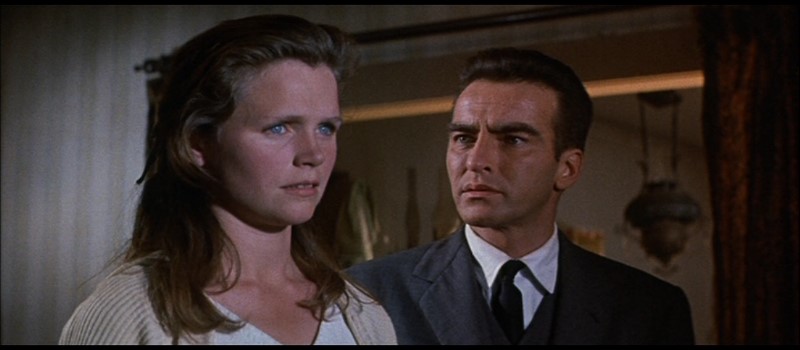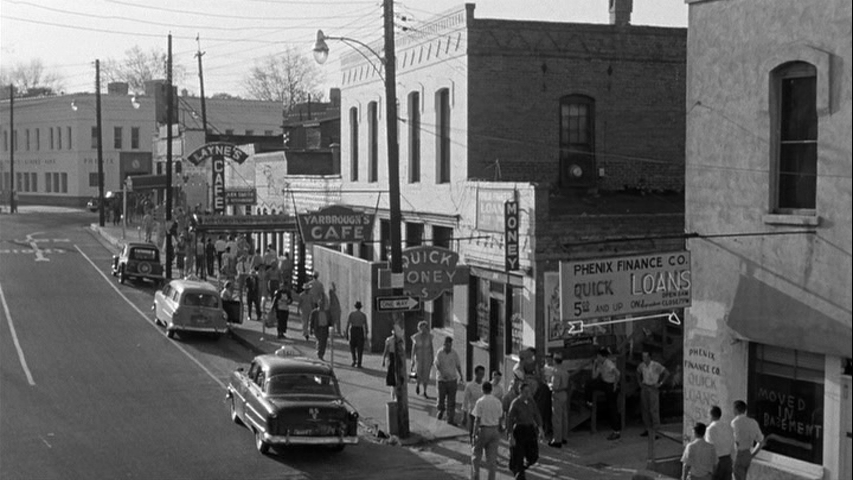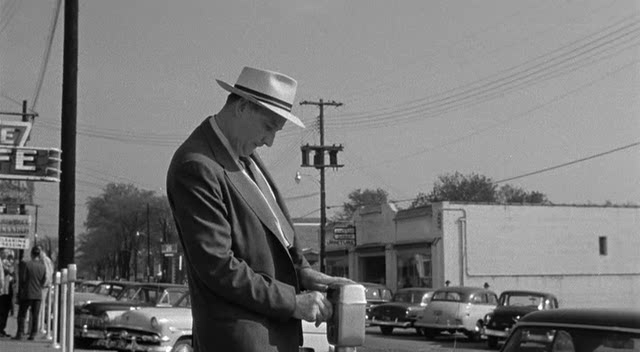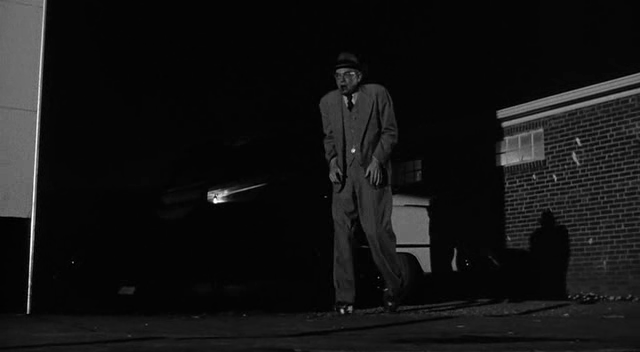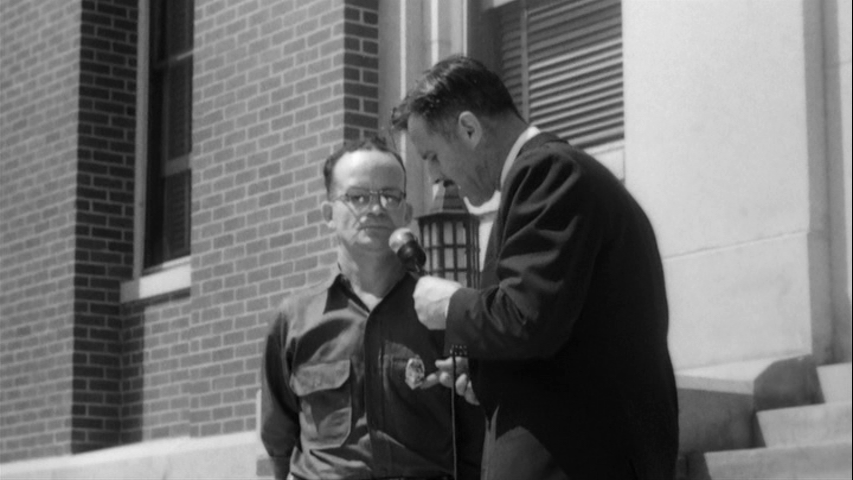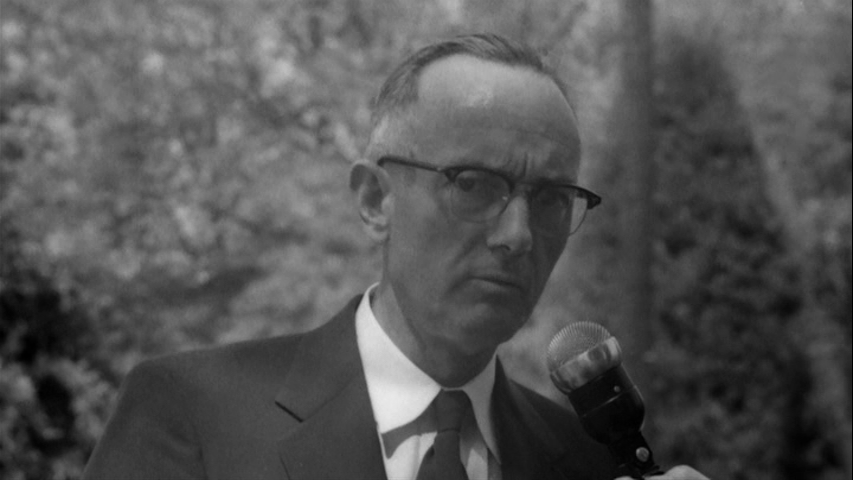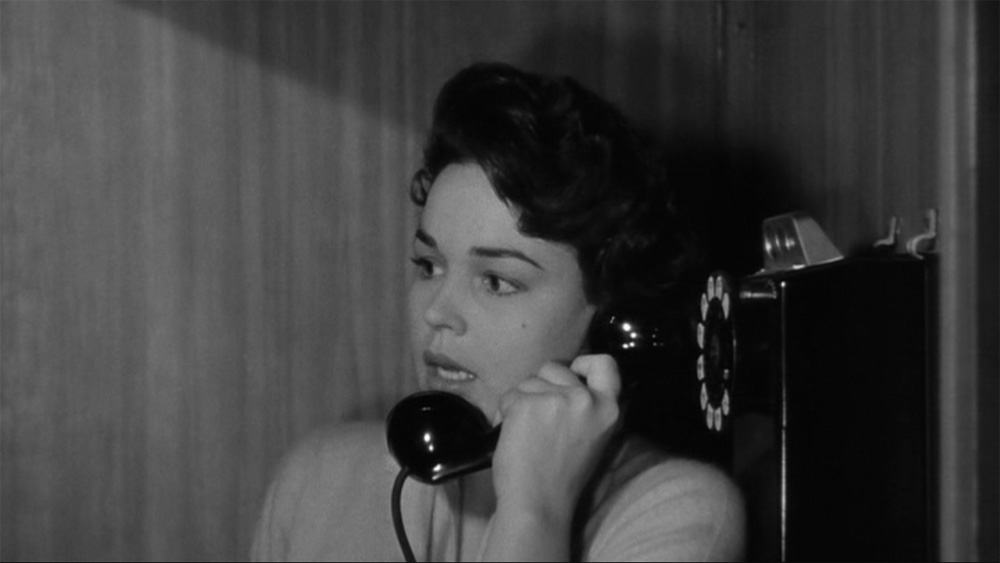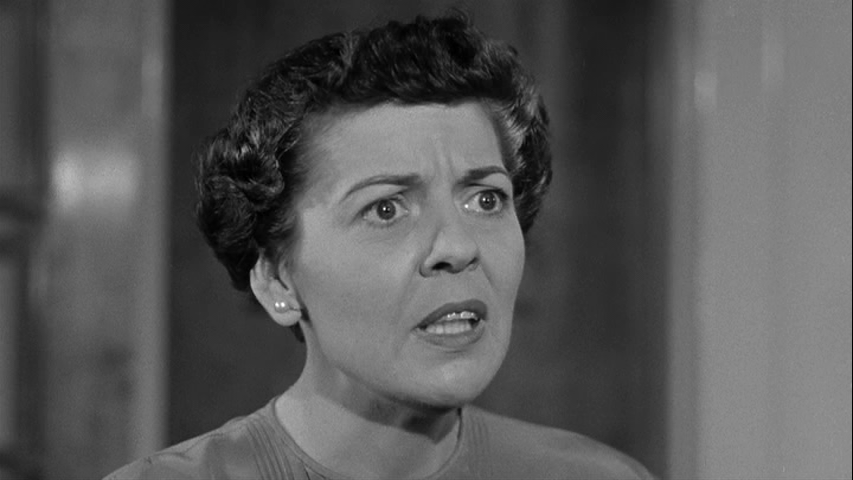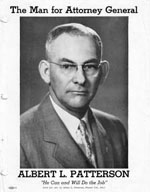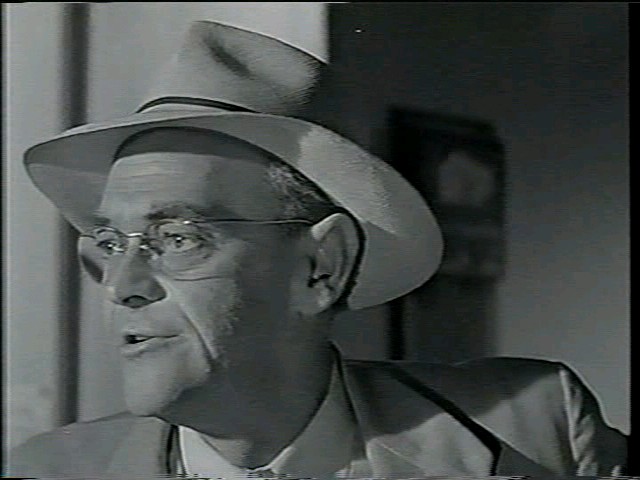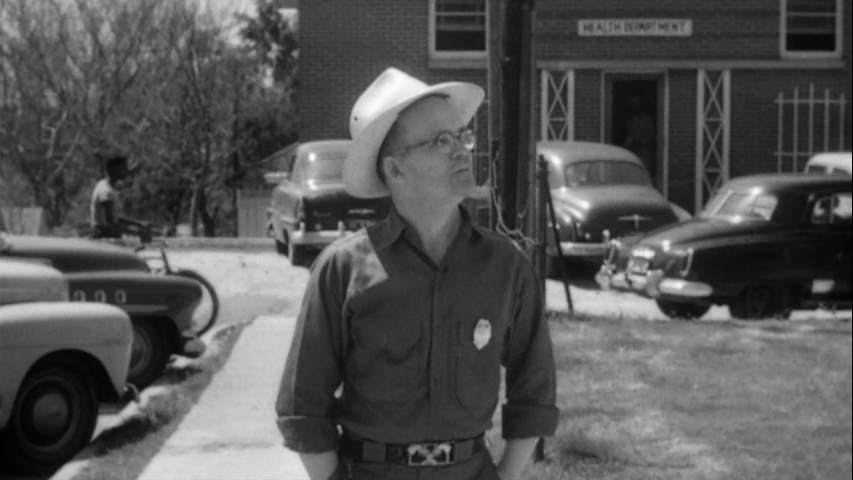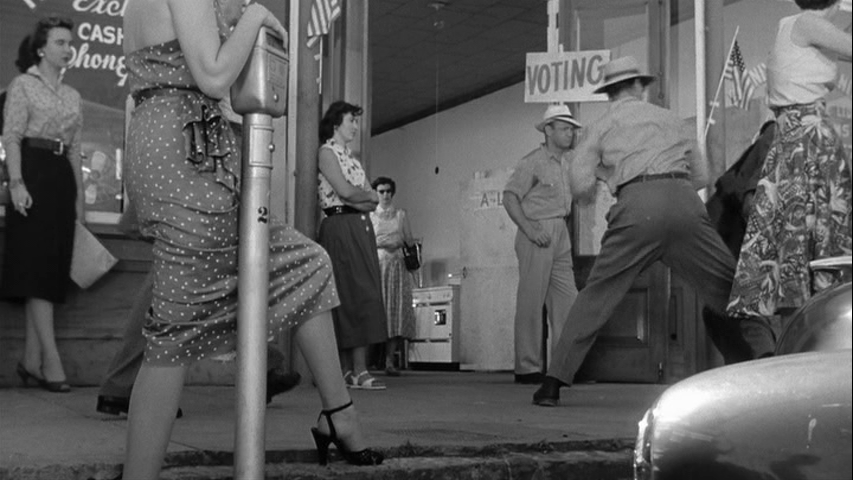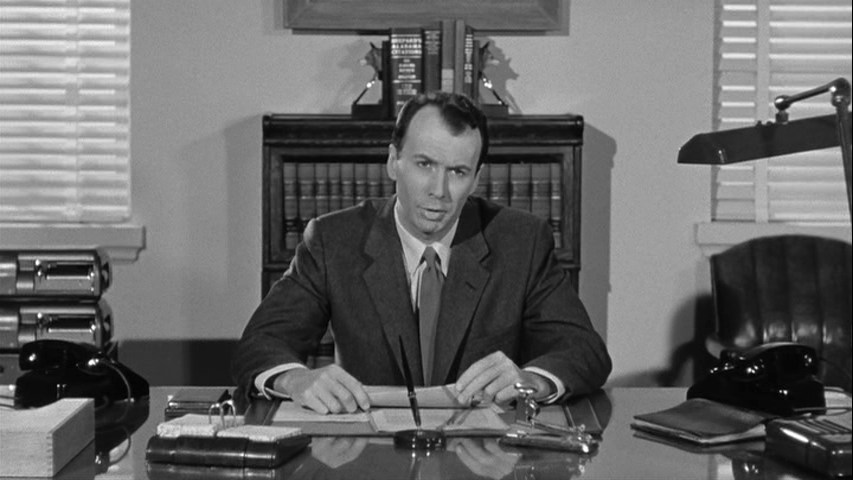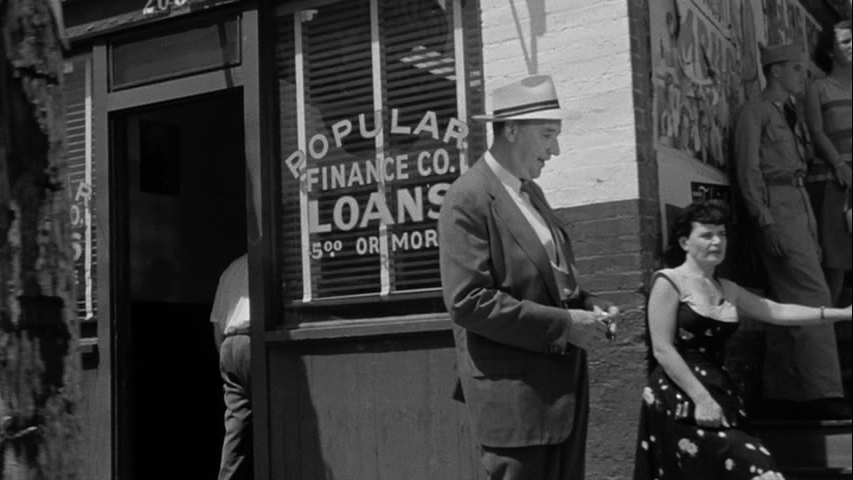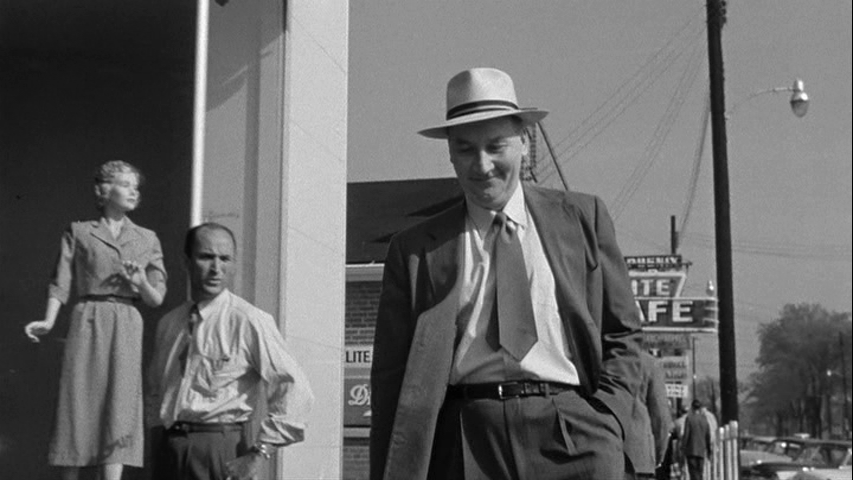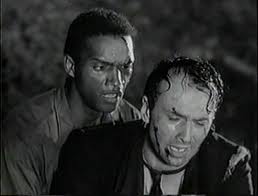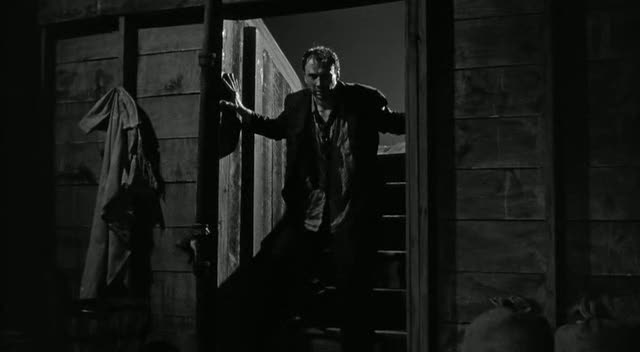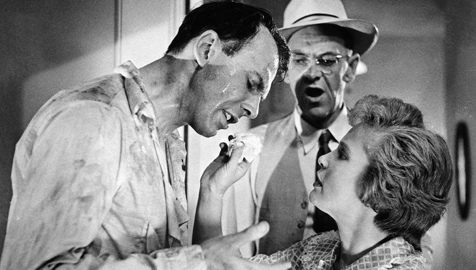From The Oxford-American, issue #42, Winter 2002. — J.R.
Karlson pushes and punches, but he’s good at it. He can dredge up emotion; he can make the battle of virtuous force against organized evil seem primordial. He has a tawdry streak (there’s an exploitation sequence with a nude prostitute being whipped), and he’s careless (a scene involving a jewelry salesman is a decrepit mess), but in the onrush of the story the viewer is overwhelmed….One would be tempted to echo Thelma Ritter in All About Eve –”Everything but the bloodhounds snappin’ at her rear end” — but some of the suffering has a basis in fact.
— Pauline Kael on Walking Tall (1974)
1. What Qualifies as Real
As an Alabama expatriate who fled north the first chance I could get, I didn’t keep my southern accent for long; it fell away, in a matter of months, like dead skin. The fact was — and is — that Alabama accents sound stupid to Yankees; and since I was both a teenager and trying hard to become a Yankee, they eventually began to sound stupid to me. Especially during the Civil Rights Movement, already in full swing by then, having a southern accent, if you were white, made you sound like a racist to some people, regardless of what you said or did. At parties in New York, I would be asked from time to time whether I felt ashamed of coming from Alabama, which would tick me off no end. They also often seemed to think that being Jewish in the South was difficult, not understanding that your family’s class could function as a form of protection. My grandfather ran a small chain of movie theaters in the northwestern corner of the state, and my father worked for him; my mother, a model from New York, set about acquiring a Southern accent long before I started divesting myself of my own, pretty much for the same reason. I should have added that the only overt prejudice I ever encountered at that point came from Yankees, for being a white Southerner — or from other white Southerners, for hanging out with blacks.
It was years before I conclusively decided that Florence, Alabama and I weren’t much of match. But even before I figured that out, one reason why I saw so many movies at my grandfather’s theaters was that they took me out of my surroundings. Just the same, I would have appreciated movies that showed something about where I lived — movies that authenticated Alabama by showing the rest of the world what it was like. Metaphysically speaking, the desire to see Alabama on the big screen was really nothing but the desire to feel that I existed in the wider scheme of things. In crude fantasy terms, it entailed starring in an epic that played on Times Square.
Was my desire to see my life blown up to the size of a wall really nothing but the urge to have my Southern existence vindicated? Apart from five Elia Kazan features that took some trouble to have its actors speak with proper Southern accents — Panic in the Streets (1950, New Orleans), A Streetcar Named Desire (1951, “New Orleans” as conjured up by studio sets), Baby Doll (1956, rural Mississippi), A Face in the Crowd (1957, Memphis and environs), and Wild River (1960, the Tennessee Valley, my own stomping ground) — the overall record of Hollywood depicting the South with some fidelity was generally abysmal.
Simply to feel that I was part of the world, meaning just another part, wasn’t enough for me, who had to have his destiny writ large; and what could offer a better writing pad in the sky than a crummy movie? The problem is, even if some film-industry folk are currently removing by digital means images of the World Trade Center from forthcoming movies, the best movie slime merchants of the 1950s were more bent on exploiting rather than censoring all the tell-tale traces of their audience’s traumas — and, to the best of my recollection, no one ever croaked as a consequence.
One perfect example of this tendency to strike while the iron was still hot and when the afterglow was still lurid — spurred on by the fad of shooting cheap noirs and thrillers on locations, which started in the mid-40s with Louis de Rochemont productions like The House on 92nd Street and Kazan’s Boomerang — was an even lower budget and sleazier black-and-white crime picture seen in October 1955, shot on location in Phenix City, Alabama. Admittedly I’ve never been there; it’s the other side of the state from Florence, in the southeast —- the other side of the moon as far as I was concerned in the mid-50s. I’ve never even been to the adjacent and much larger Columbus, Georgia, home to Fort Benning, the Army base just across the Chattahoochee River that furnished most of the clientele for Phenix City’s bustling gambling joints, bars, strip shows, and brothels. But The Phenix City Story looked, sounded, and felt to me like Alabama in 1955, and everyone I knew in Florence who saw the picture agreed.
Today, at least for me, the illusion still holds, and I’ve always cited this movie as the best ever made in the state, as well as the most authentic. Maybe that’s in part because watching it is experiencing the apotheosis of Southern sleaze —- a bit like festering for hours in the seediest possible Alabama Greyhound depot in August without air conditioning. Another reason: the movie goads one into emotions of righteous horror and indignation that ultimately makes the viewer feel energized, like a potential member of a lynch mob, despite the fact that this movie’s politics are plainly liberal. As Jack Shadoian, the most perceptive commentator about the film, has put it, “The movie makes you want to kill and robs you of the satisfaction” — the latter trait undoubtedly deriving from its liberalism. Phil Karlson, the director, whom I knew nothing about in 1955, was a Chicago-born journeyman who directed Marilyn Monroe in her first starring role, in the 1949 Ladies of the Chorus, and later became known as a specialist in paranoid crime thrillers. (Shadoian is probably right in singling out 99 River Street and The Phenix City Story as the two best examples of this subgenre, though the subsequent Walking Tall — which resembles the latter in many particulars, especially when it comes to turning the viewer into a liberal-minded fascist — was by far his biggest hit.)
Yet all I knew about Phenix City before or after seeing the movie, at least until recently, was precisely what the movie was about: the assassination of the Alabama attorney general Albert Patterson — who’d just been elected on a platform of cleaning up crime in Phenix City, and who was shot down in the street before he could take office. By reputation, Phenix City was already one of the most corrupt towns in the country, run by mobsters who were terrorizing the citizens, but the shooting of Patterson made this corruption impossible to avoid.
I was eleven at the time, spending the night at my grandparents’ house, watching something like Our Miss Brooks or The Life of Riley with my grandfather, when an announcement of the murder interrupted the show. I can remember my grandfather telling me the next morning he hadn’t slept all night —- the same reaction he’d have nearly three years later, September 1957, when Bart Floyd, a prospective Klan captain just outside of Birmingham, decided to prove his mettle by castrating a Negro “boy” at random, settling on a thirty-four-year-old housepainter, Judge Edward Aaron. Maybe it’s hard for some to remember this now, but these events were comparable in certain ways to the September 11, 2001 terrorist attacks; both left a raw feeling in the gut that said all bets were off, that anything could happen because men were capable of that kind of indifference to suffering. And it had military consequences in 1954 as well as 47 years later: back then, it meant imposing martial law on Phenix City and sending in soldiers.
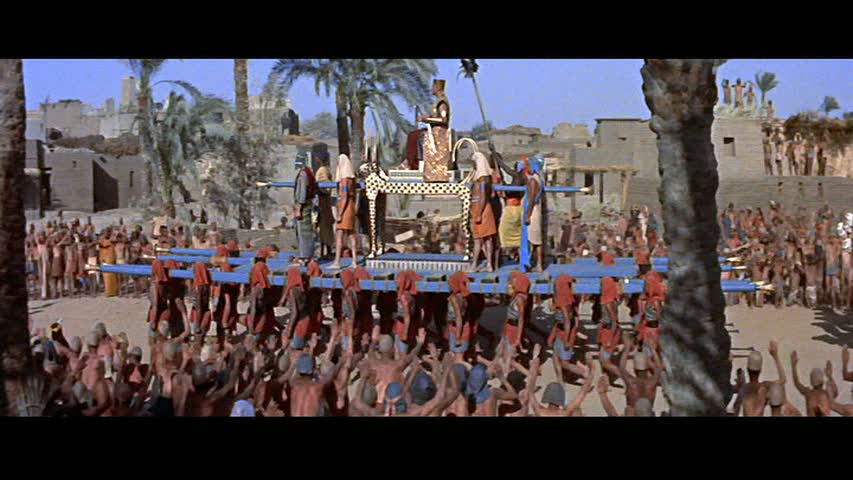
Then, only sixteen months after Patterson was gunned down, along came a movie about it. The Phenix City Story had a two-day run at the Shoals — the largest of my grandfather’s theaters, with 1,350 seats — on Sunday and Monday, October 23 and 24, preceding a three-day run of Land of the Pharaohs [see above]. To give a slightly wider sense of context, this was a month after comparable runs of The Prodigal (“MGM’s mighty spectacle of a city of sin!” promised the ads) and Kiss Me, Deadly — and two months after Blackboard Jungle and Fritz Lang’s Moonfleet (“FURY of a pirate leader! FIRE of a gypsy woman!”) Sort of an even spread, one might say, between contemporary Sodoms and Gomorrahs on the one hand, sadistic versions of history and antiquity on the other.
Not counting the pre-credits newsreel (an essential part of the movie, regrettably missing from some prints), the first signifier of “reality” in The Phenix City Story — occurring just after the credits appear over a spread of weekly magazines — is a printed rolling title whose authenticity seems guaranteed by its naïveté. An outright grammatical error in the first sentence, “There is no other place in the world as Phenix City, Alabama,” is followed by a quaint allusion to antiquity in the next two:
For almost one hundred years it has been the modern Pompeii where vice and corruption were the order of the day. Unlike Pompeii it did not require a Vesuvius to destroy it, for Phenix City is now a model community — orderly — progressive — and a tribute to the freedom loving peoples everywhere.
***
2. What Qualifies as History
Karlson brings to his film an element of sordid horror. His environments are noisy, crowded, fetid. The sky over Phenix City is gray and dismal. The musical number at the Poppy Club [“Phenix City Blues”] is an anti-number, coarse, unprofessional, talentless. A dead child is thrown from a car onto a lawn. Voters, men and women, are beaten up at the polls and stagger into the street, dripping blood. The “heroine” gets killed, as does her pleasant young suitor. A crippled lawyer [Albert Patterson] is shot in the mouth. One almost can’t believe what is happening on the screen; the horror of it suffocates.
— Jack Shadoian, Dreams and Dead Ends (Cambridge, MA & London, England: The MIT Press, 1977)
It sounds hyperbolic, but most of this, I’ve recently discovered, actually happened in real life: not the dead child —- a black girl, to be precise — tossed onto a lawn; but the beaten-up voters and some of the other murders is accurate. To emphasize the point, the movie even starts off with the aforementioned sensationalist newsreel, which features interviews with several inhabitants of Phenix City — veritable hayseeds all, to judge by their accents, provoking varying degrees of merriment or impatience for audiences inside as well as outside the South. Shadoian, clearly a Yankee and city slicker (1), rather easily concludes that, “however sincere, the real people of Phenix City are awfully dull.” The newsreel and movie proper were both being made around the same time Albert Patterson’s murder trial was unfolding. This wasn’t long after Albert’s son John (played in the movie by Richard Kiley) was himself elected attorney general on his father’s platform, but at the time of his father’s death he was just back from Germany, where he worked at the Nuremberg trials, planning to join his father’s law office. Eventually Patterson the younger became governor of the state — I played with my high school band at his inauguration in Montgomery.
Anyway, dull or not — and for me these folks weren’t dull at all, just awkward and non-Hollywood — I can recall some particularly loud guffaws at the Shoals when one of the locals was interviewed in the newsreel section. Quinnie Kelley — janitor at the Russell County courthouse, deputy sheriff, and a witness in one of the current murder trials, whose wife was so scared she was seeing a doctor about it — is asked, “You carry a gun?” and he replies, “Yeah Ah carry a gun,” followed by, “You know how to use it?” and “Yeah Ah know how to use it,” then “Will you use it?” and “Yeah Al use it” — all his responses delivered with the same lack of inflection.
There were further yucks, too, when Hugh Britton — one of the real-life crusaders against Phenix City’s crime and corruption, portrayed in the film by George Mitchell — imparts a piece of folk wisdom while unobtrusively whittling a piece of wood: “When I was a boy we just for a pastime at night used to take flashlights and broomsticks and go down to the city dump to hunt rats — kill some big ones. And… (fumbling as he searches for words) if you turn a light, a bright light, in a rat’s face, he’ll run for cover — and it doesn’t make any difference if that rat is in the city dump or in the city hall.”
More than anything else, what these local voices and accents brought to the movie was a sense of banality that provides a chilling counterpoint to the atrocities being revealed. Perhaps the key moment of desperate hopelessness in the movie occurs when the young woman Shadoian identifies as the heroine (played by Kathryn Grant, who would marry Bing Crosby only two years later) rushes with her boyfriend’s father (Truman Smith) from the City Hall to the hospital after hearing that her boyfriend, Fred (Biff McGuire), was taken there after having been found in a ditch outside town, unconscious but alive. The short-haired woman behind the hospital reception desk says to the two of them, “There’s just one formality -— you know the red tape in a hospital. Where do you want us to send the body? What mortuary?” Once she sees the shock that has registered in their eyes, she tonelessly adds, “Oh, I’m terribly sorry. Forgive me. I thought you knew — you see, he was dead on arrival.”
The woman intoning these lines is clearly not a professional actor, sincere but stiff in her carefully enunciated Alabama delivery —- carefully splitting the word “forgive” into separate syllables as if speaking to a child. The fact that she doesn’t even know how to make her lines dramatic in any conventional way conjures up a kind of reality to the awful information she’s conveying, a kind of everyday unseemliness that has stayed with me for most of my life.
Apparently the passion for verisimilitude in The Phenix City Story went much further than using local people. According to Karlson’s entry in Ephraim Katz’s Film Encyclopedia, the director, who “during the course of filming…uncovered new evidence that helped convict the murder suspects,” also had John McIntire, who played Albert Patterson, “wear the same clothes the dead man had actually worn at the time of the murder.” (As an aid to Method acting, as some kind of tribal talisman, or as a grim sort of joke? Katz doesn’t say.)
It would be fair to add that the movie made a big impression in 1955, especially in Alabama. (Though I doubt it played on Times Square, it seems pretty likely that it made it to 42nd Street.) Yet apparently it made no imprint at all on Margaret Anne Barnes when forty-odd years later, in 1998, she wrote The Tragedy and Triumph of Phenix City, Alabama (Macon, GA: Mercer University Press), a book about the same events. More precisely, the impact it had, if any, is apparently subliminal, because the book’s frontispiece — which purports to be a photograph of Albert Patterson during his fatal campaign, and which shows a man standing with a cane, flanked by two posters that read, “VOTE FOR ALBERT L. PATTERSON ATTORNEY GENERAL”– is actually a photograph of John McIntire as he appears in the movie. So maybe at least the suit is authentic, but the man isn’t. Yet 120-odd pages further in the book, the photograph appears a second time, this time directly across from another full-page photograph — this other one of the real Albert Patterson, who looks substantially different (especially his nose), sitting in his living room while he and his wife (who appears in the movie’s newsreel) listen on their radio console to the voting returns in the May 4, 1954 primary election.
How could Barnes — an informed and informative local historian, whose overall veracity is thrown into question only when she quotes verbatim entire conversations from the mid-1950s, and in fact serves as my main factual source here — have failed to notice such a howler? How could she be completely unaware of Karlson’s movie, or else so indifferent or hostile to it that she doesn’t mention it once in her 319 pages? One clue: both photographs on these facing pages are labeled “Courtesy of the Columbus Ledger-Enquirer,” which suggests that both must have come from the same newspaper file, surely an equalizing process in some respects. I’m reminded of the closing intertitle of Stanley Kubrick’s Barry Lyndon: “Good or bad, handsome or ugly, rich or poor, they are all equal now.” And to be fair to Barnes, who indicates in her dedication that she was ill when she wrote this volume (“To my two physicians…who kept me alive long enough to finish this book”), a half-hour video produced in 2000 by the University of Alabama’s Center for Public Television and Radio, Up From the Ashes: The Rebirth of Phenix City, commits the same error of misidentifying the very same photograph, despite the fact that the video mentions the movie and even includes clips from it.
The Phenix City Story isn’t available for sale or rental on video, and it’s not out on DVD [2011 postscript: it is now], so you have to take my word for it — just as the movie pretty much says you have to take its own word for it. Maybe this movie qualifies as history, but if it isn’t out there on the market, it no longer belongs to history in any practical sense. (2)
I think there’s a lesson here somewhere. And I’m afraid it’s a lesson that rebounds on me even more than on Barnes or the makers of Up From the Ashes, because I’ve recently discovered something ghastly about my own memory: that every time I try to imagine what John Patterson looked like, I can remember only Richard Kiley, even though I must have seen Patterson on TV and in newspaper photos countless times while he was governor. Is this because a movie’s so-called realism counts for more in the final analysis than the reality it purports to depict? Maybe, but the movie’s partly to blame for this, because it ends with a shot of Kiley–not Patterson — seated at Patterson’s desk in what’s supposed to be his attorney general’s office in Montgomery (though it is almost certainly a set), speaking directly to the camera just as the real Patterson would have if Karlson had enlisted him to speak the film’s closing cautionary/inspirational words. (“With God’s help, I shall not fail.”) And this confused me so much when I was thirteen that I’ve remained confused about John Patterson ever since.
***
3. Coda: What Makes a Movie — or This One, Anyway
In short, it isn’t just good actors as well as the use of locals and nonprofessionals that make The Phenix City Story seem real; it’s also the mixture and occasional confusion between the two. My favorite scene in the film, which is especially overt about this ambiguity, is also one of the very first: Rhett Tanner (played by Edward Andrews) — owner of the Poppy Club and a fictional counterpart of one or more of the main local crooks — travels across downtown Phenix City from his clip joint, first by foot and then by car, to pay a visit to his old “pal” Albert Patterson, who hasn’t yet decisively turned against the local mob and who, like the real Patterson, served as their attorney in various trials. En route, we see such details as prostitutes on the street plying their trade with soldiers from Fort Benning while Tanner makes various kinds of small talk with many of the people he passes on the street: Ma Beachie, the real-life, grandmotherly proprietor of one of the other clubs; one of his own employees, Mack, who alerts him, via a spy, to news about a secret anti-mob meeting scheduled for that evening; Mr. Seymour, a member of Tanner’s church, who chats with him briefly about the Sunday sermon he just missed (the subject? You guessed it —- Sodom and Gomorrah).
It turns out that Tanner is more evil than almost anyone else in The Phenix City Story, but in this early scene Andrews and Karlson’s fleet direction make him likable as well as credible — a good ol’ boy making some of his daily rounds as good-naturedly as possible. That’s partly what made the film so believably Southern. And what made it believably contemporary as well as Southern was the racist killing of a little black girl to scare the Pattersons away from challenging the mob — an incident that I only recently figured out must have been invented. I have no idea whether this addition can be attributed to Crane Wilbur, the screenwriter credited with the Phenix City documentation, or to Dan Mainwaring — an old Hollywood pro best known for adapting his own novel Build My Gallows High into the script for Out of the Past under the name Geoffrey Holmes, then for adapting Invasion of the Body Snatchers from Jack Finney’s novel the year after The Phenix City Story. (Judging by these two latter scripts, he may have been, not counting Karlson himself, the consummate master of conveying 50s paranoia.)
But whoever worked the racial angle into the script knew what he was doing and was even somewhat prescient about it. The film was released less than 18 months after racial segregation was ruled unconstitutional in Brown v. Board of Education of Topeka, but this was still over a month before Rosa Parks refused to relinquish her seat on a Montgomery bus, thereby launching the Civil Rights Movement. Yet the nonviolent activist position of Martin Luther King Jr. that first became widely known during that protest is already implicitly present in this movie, in the fictional character of Zeke Ward (James Edwards — an actor already familiar from his roles in Home of the Brave and The Steel Helmet). Zeke is a black man who sweeps up at the Poppy Club, loses his job there after he helps John Patterson escape from a violent skirmish (a fistfight with one of Tanner’s lackeys), and is the father of the little girl subsequently slain by Tanner’s henchmen and thrown on the Pattersons’ front lawn. (After an effective hysterical scene with John trying to calm his sobbing wife and kids, we get the chillingly indifferent response of a fat cop to the news when it’s phoned in to the station house. Turning dully to another cop, he says, “Somebody threw a dead nigger kid on Patterson’s lawn; go out and have a look.” This prompted more hoots from the Shoals — though probably more in disbelief at this callousness than anything else, and almost surely not from the “colored balcony”.)
Much later in the film — in what qualifies as the action climax — Patterson, after finding the dead body of Kathryn Grant’s character inside Ward’s shack, catches up with evil mobster Tanner and beats him half to death in a muddy swamp. But Ward, the only black character of consequence in the film, pulls Patterson away from Tanner before he can actually kill him, persuading him to hold off, citing the same words his wife has just used to keep Ward himself from shooting Tanner: “`Thou shalt not kill,’ the Lord said.” So properly speaking it’s Zeke and his wife, not the movie per se, who deprive us of the satisfaction of committing murder. (But just to make sure the movie doesn’t alienate us bloodthirsty spectators entirely, John Patterson has already just promised an angry crowd downtown in the previous scene that if the law doesn’t take care of his father’s killer, he’ll do it himself.)
It’s worth noting that this movie was probably written before Wilbur or Mainwaring ever heard of Martin Luther King Jr. It’s also worth stressing that a movie of this kind could apparently play across the south in 1955 without any threat of censorship — unlike, say, Baby Doll the following year, which my father booked in spite of a threatened boycott from the Catholic church, or Island in the Sun two years later, which he didn’t dare book because a faintly implied romantic interest between Harry Belafonte and Joan Fontaine was enough to drive some people around the bend. (As I recall, an exhibitor in Huntsville who tried to show it got his theater fire-bombed.) And certainly no one objected to The Defiant Ones in 1958 — an arty Stanley Kramer parable about two escaped southern convicts chained together, Tony Curtis and Sidney Poitier, which curiously elicited only howls of laughter when I saw it in Florence, as if the audience were watching a Three Stooges comedy. (Would the same thing have happened if the Colonel has allowed Elvis to costar in the movie with Sammy Davis Jr., as they both wanted to do? Hard to say.) So it was sex, or sex in conjunction with race, not race alone, that generally got banned in Southern moviehouses in the 50s — and not even that when it came to Douglas Sirk’s Imitation of Life (perhaps because Universal cautiously cast a white actress, Susan Kohner, as a black character passing for white).
The Phenix City Story could get around easily in the mid-50s because it was basically a B-film — not in the original sense of that term, as the lower half of a double bill that played with an A picture, but as a low-budget movie that was less an event than part of an overall flow, the way that TV or the Internet is today. So when film critic Todd McCarthy asked me to write about this movie for a collection he was coediting in the early 70s called Kings of the Bs — before the release of Karlson’s somewhat similar Walking Tall, his biggest hit — it was a logical choice for such a book.
Unfortunately I had to turn him down. But now that I’m fulfilling the assignment for another editor almost three decades later, I can only account for my 46-year-old obsession with this film by acknowledging my preference for the realistic over the real. Maybe this is because the former can tell everybody what Alabama is really like, but the latter can’t.
— The Oxford-American, issue #42, Winter 2002
***
Notes
1. In fact, I’m cheating a bit here. I met Shadoian once — probably long before he ever got involved with film studies — when my Manhattan cousin David, a jazz buff like me, took me along with him one evening to visit a friend in one of the outer boroughs who also loved Bird, Lennie Tristano, and Warne Marsh, and even took out his tenor sax at one point to play along with one of his records. Years later, David identified this friend as Jack Shadoian, author of Dreams and Dead Ends.
2. This is why I can’t summon up much patience for fellow film reviewers who hold forth on “the state of cinema,” foreign or domestic, because most things are always unavailable. The fact is, much of what’s available is arbitrary, because the studios and distributors handling this stuff don’t generally know what they have; they tend to buy and sell several titles in bunches, regarding individual films the way other wheeler-dealers might regard separate lengths of pipe.

